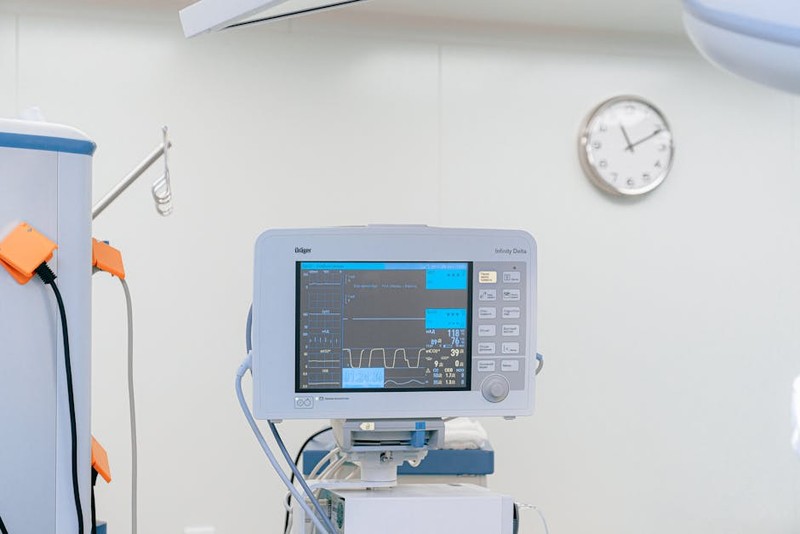The Unseen Battle: When Precision Meets Human Biology
In my 25 years specializing in medical device machining, I’ve learned that what separates adequate from exceptional isn’t just technical skill—it’s understanding the intimate relationship between machined components and the human body. I recall a pivotal moment early in my career when we received a batch of titanium spinal fusion cages back from clinical testing. The parts met all documented specifications, yet surgeons reported “unexplained tissue irritation” during implantation.
The revelation: Surface finishes that appeared identical under standard inspection showed dramatic differences at the cellular interaction level. This taught me that medical device machining isn’t about meeting specs—it’s about anticipating biological responses.
The Micro-Tolerance Dilemma: Beyond the Blueprint
When ±0.025mm Isn’t Good Enough
Most manufacturers believe holding ±25 microns satisfies “high-precision” requirements. In medical devices, particularly implants and surgical instruments, we regularly work in the ±5-10 micron range. But here’s the counterintuitive truth: achieving tighter tolerances isn’t always about better machines—it’s about mastering thermal dynamics and material behavior.
In one project involving cobalt-chromium knee implants, we discovered that even the 2-3°C temperature variation across our shop floor caused dimensional shifts exceeding our tolerance limits. The solution wasn’t purchasing million-dollar climate chambers, but implementing strategic process controls:
⚙️ Thermal Management Protocol:
– Establishing 30-minute thermal equalization periods for raw materials
– Implementing coolant temperature regulation to ±0.5°C
– Scheduling high-tolerance operations during temperature-stable periods
The Case of the Vanishing Tolerances
Our most challenging project involved machining miniature components for a robotic surgical system. The specifications demanded maintaining positional tolerances of ±8 microns across complex 5-axis contours. Initially, we achieved only ±15 microns consistently.
💡 The breakthrough came from analyzing toolpath strategies rather than machine capabilities. By implementing trochoidal milling techniques with optimized engagement angles, we reduced cutting forces by 40% and achieved our target tolerances.
Material Matters: The Biocompatibility Imperative
Beyond Machining: The Surface Integrity Factor
Many manufacturers treat machining and surface treatment as separate processes. In medical devices, they’re inseparable. I’ve seen beautifully machined components fail biocompatibility testing due to sub-surface micro-fractures invisible to standard inspection.
The critical insight: Surface integrity determines biological response more than surface roughness alone.
In developing nitinol cardiovascular stents, we implemented a comprehensive approach:
1. Material-specific tool geometries with specialized edge preparations
2. Progressive parameter optimization balancing heat generation and mechanical stress
3. Post-machining validation including SEM analysis and accelerated corrosion testing
Case Study: Orthopedic Implant Cost-Reduction Without Compromise
A major medical device manufacturer approached us with a challenge: reduce production costs for their titanium hip stems by 20% while maintaining their exceptional clinical track record.
Initial Assessment:
– Current cost: $287 per component
– Rejection rate: 8.7% primarily from surface defects
– Machining time: 42 minutes per part

Our Optimization Strategy:
| Improvement Area | Before | After | Impact |
|——————|——–|——-|———|
| Toolpath Efficiency | Conventional milling | Adaptive roughing + high-speed finishing | Cycle time reduced 31% |
| Tool Life Management | Fixed replacement intervals | Condition-based monitoring | Tooling costs reduced 18% |
| Fixture Design | Standard vise setup | Custom magnetic fixture | Setup time reduced 65% |
| Quality Control | Final inspection only | In-process monitoring | Rejection rate dropped to 1.2% |
Results after 6-month implementation:
– ✅ Cost per component: $221 (23% reduction)
– ✅ Machining time: 29 minutes (31% improvement)
– ✅ First-pass yield: 98.8% (from 91.3%)
– ✅ Surface roughness consistency: improved 42%
The Human Factor: Expertise Over Automation

When Technology Reaches Its Limits
The medical industry’s push toward automation often overlooks a crucial reality: the most critical decisions in high-precision medical machining still require human expertise. I’ve witnessed seven-figure automated cells produce inconsistent results because they lacked the nuanced understanding of an experienced machinist.
In one instance, our automated inspection system passed a batch of surgical drill guides, but a veteran technician noticed subtle tool marks that indicated impending tool failure. His intervention prevented a potential batch rejection that would have delayed a critical surgical product launch.
Building Medical-Grade Expertise
Developing talent for medical device machining requires more than technical training. We’ve implemented a mentorship program focusing on:
Pattern recognition for early problem detection
⚙️ Material science understanding beyond standard specifications
💡 Clinical awareness of how components function in procedures
Future-Proofing Medical Machining: The Next Frontier
Additive-Subtractive Hybrid Approaches
The most exciting development I’m currently implementing combines 5-axis machining with directed energy deposition for patient-specific implants. This hybrid approach allows us to:
1. Create complex internal structures impossible with conventional machining
2. Achieve final tolerances of ±5 microns on custom geometries
3. Reduce material waste by up to 70% compared to traditional methods
Data-Driven Process Validation
The future of medical device machining lies in comprehensive data collection and analysis. We’re moving beyond simple SPC to implementing AI-powered predictive quality systems that:
– Anticipate tool wear before it affects part quality
– Correlate process parameters with long-term clinical outcomes
– Optimize entire manufacturing systems rather than individual operations
Actionable Insights for Medical Device Manufacturers
Based on my decades of experience, here are the most critical considerations for excellence in medical device machining:
💡 Start with the end use: Understand exactly how the component functions in clinical settings before designing manufacturing processes.
⚙️ Control your environment: Temperature, humidity, and vibration management often provide greater returns than machine tool investments.
Validate comprehensively: Standard inspection methods frequently miss critical defects—implement multiple validation techniques.
📊 Embrace data transparency: Complete traceability and process documentation aren’t just regulatory requirements—they’re improvement opportunities.
The journey to mastering high-precision medical device machining never ends, but the rewards—both in business success and contributing to patient outcomes—make every challenge worthwhile. The manufacturers who thrive will be those who view precision not as a specification to meet, but as a commitment to the people whose lives depend on their work.
